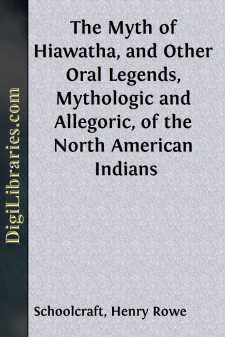Categories
- Antiques & Collectibles 13
- Architecture 36
- Art 48
- Bibles 22
- Biography & Autobiography 813
- Body, Mind & Spirit 142
- Business & Economics 28
- Children's Books 16
- Children's Fiction 13
- Computers 4
- Cooking 94
- Crafts & Hobbies 4
- Drama 346
- Education 46
- Family & Relationships 57
- Fiction 11829
- Games 19
- Gardening 17
- Health & Fitness 34
- History 1377
- House & Home 1
- Humor 147
- Juvenile Fiction 1873
- Juvenile Nonfiction 202
- Language Arts & Disciplines 88
- Law 16
- Literary Collections 686
- Literary Criticism 179
- Mathematics 13
- Medical 41
- Music 40
- Nature 179
- Non-Classifiable 1768
- Performing Arts 7
- Periodicals 1453
- Philosophy 64
- Photography 2
- Poetry 896
- Political Science 203
- Psychology 42
- Reference 154
- Religion 513
- Science 126
- Self-Help 84
- Social Science 81
- Sports & Recreation 34
- Study Aids 3
- Technology & Engineering 59
- Transportation 23
- Travel 463
- True Crime 29
The Myth of Hiawatha, and Other Oral Legends, Mythologic and Allegoric, of the North American Indians
Categories:
Description:
Excerpt
PREFACE.
There is but one consideration of much moment necessary to be premised respecting these legends and myths. It is this: they are versions of oral relations from the lips of the Indians, and are transcripts of the thought and invention of the aboriginal mind. As such, they furnish illustrations of Indian character and opinions on subjects which the ever-cautious and suspicious minds of this people have, heretofore, concealed. They place the man altogether in a new phasis. They reflect him as he is. They show us what he believes, hopes, fears, wishes, expects, worships, lives for, dies for. They are always true to the Indian manners and customs, opinions and theories. They never rise above them; they never sink below them. Placing him in almost every possible position, as a hunter, a warrior, a magician, a pow-wow, a medicine man, a meda, a husband, a father, a friend, a foe, a stranger, a wild singer of songs to monedos or fetishes, a trembler in terror of demons and wood genii, and of ghosts, witches, and sorcerers—now in the enjoyment of plenty in feasts—now pale and weak with abstinence in fasts; now transforming beasts and birds, or plants and trees into men, or men into beasts by necromancy; it is impossible not to perceive what he perpetually thinks, believes, and feels. The very language of the man is employed, and his vocabulary is not enlarged by words and phrases foreign to it. Other sources of information depict his exterior habits and outer garb and deportment; but in these legends and myths, we perceive the interior man, and are made cognizant of the secret workings of his mind, and heart, and soul.
To make these collections, of which the portions now submitted are but a part, the leisure hours of many seasons, passed in an official capacity in the solitude of the wilderness far away from society, have been employed, with the study of the languages, and with the very best interpreters. They have been carefully translated, written, and rewritten, to obtain their true spirit and meaning, expunging passages, where it was necessary to avoid tediousness of narration, triviality of circumstance, tautologies, gross incongruities, and vulgarities; but adding no incident and drawing no conclusion, which the verbal narration did not imperatively require or sanction. It was impossible to mistake the import of terms and phrases where the means of their analysis were ample. If the style is sometimes found to be bald, and of jejune simplicity, the original is characteristically so. Few adjectives are employed, because there are few in the original. The Indian effects his purposes, almost entirely, by changes of the verb and demonstrative pronoun, or by adjective inflections of the substantive. Good and bad, high and low, black and white, are in all cases employed in a transitive sense, and with strict relation to the objects characterized. The Indian compound terms are so descriptive, so graphic, so local, so characterizing, yet so flexible and transpositive, that the legends derive no little of their characteristic features as well as melody of utterance from these traits....




